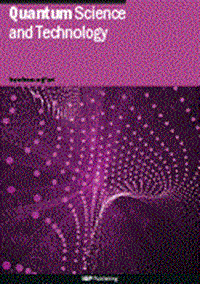Robust ultra-shallow shadows
IF 5.6
2区 物理与天体物理
Q1 PHYSICS, MULTIDISCIPLINARY
引用次数: 0
Abstract
We present a robust shadow estimation protocol for wide classes of low-depth measurement circuits that mitigates noise as long as the effective measurement map including noise is locally unitarily invariant. This is in practice an excellent approximation, encompassing for instance the case of ideal single-qubit Clifford gates composing the first circuit layer of an otherwise arbitrary circuit architecture and even non-Markovian, gate-dependent noise in the rest of the circuit. We argue that for weakly-correlated local noise, the measurement channel has an efficient matrix-product representation, and show how to estimate this directly from experimental data using tensor-network tools, eliminating the need for analytical or numeric calculations. We illustrate the relevance of our method with both numerics and proof-of-principle experiments on an IBM Quantum device. Numerically, we show that unmitigated shallow shadows with noisy circuits become more biased as the depth increases. In contrast, using the same number of samples, robust ultra-shallow shadows become more precise with increasing depth for relevant parameter regimes. The gain in sample efficiency is still limited by the noise per gate, resulting in an optimal circuit depth per noise level. Experimentally, we observe improved precision in two simple fidelity estimation tasks using five-qubit circuits with up to two layers of entangling gates, by about an order of magnitude. Under the practical constraints of current and near-term noisy quantum devices, our method maximally realizes the potential of shadow estimation with global rotations and identifies its fundamental limitations in the presence of noise.鲁棒的超浅阴影
我们提出了一种鲁棒的阴影估计协议,适用于广泛类别的低深度测量电路,只要包含噪声的有效测量映射是局部幺正不变的,就可以减轻噪声。在实践中,这是一个很好的近似,例如,理想的单量子位克利福德门构成了任意电路结构的第一层电路,甚至电路其余部分的非马尔可夫门相关噪声。我们认为,对于弱相关的局部噪声,测量通道具有有效的矩阵积表示,并展示了如何使用张量网络工具直接从实验数据中估计这一点,从而消除了分析或数值计算的需要。我们用IBM量子设备上的数值和原理证明实验来说明我们的方法的相关性。数值计算表明,带噪声电路的未减弱浅阴影随着深度的增加而变得更加偏置。相比之下,使用相同数量的样本,鲁棒超浅阴影随着相关参数范围的深度增加而变得更加精确。采样效率的增益仍然受到每个栅极噪声的限制,导致每个噪声电平的最佳电路深度。实验中,我们观察到在两个简单的保真度估计任务中,使用多达两层纠缠门的五量子比特电路,精度提高了大约一个数量级。在当前和近期噪声量子器件的实际限制下,我们的方法最大限度地实现了具有全局旋转的阴影估计的潜力,并确定了其在存在噪声时的基本局限性。
本文章由计算机程序翻译,如有差异,请以英文原文为准。
求助全文
约1分钟内获得全文
求助全文
来源期刊

Quantum Science and Technology
Materials Science-Materials Science (miscellaneous)
CiteScore
11.20
自引率
3.00%
发文量
133
期刊介绍:
Driven by advances in technology and experimental capability, the last decade has seen the emergence of quantum technology: a new praxis for controlling the quantum world. It is now possible to engineer complex, multi-component systems that merge the once distinct fields of quantum optics and condensed matter physics.
Quantum Science and Technology is a new multidisciplinary, electronic-only journal, devoted to publishing research of the highest quality and impact covering theoretical and experimental advances in the fundamental science and application of all quantum-enabled technologies.
 求助内容:
求助内容: 应助结果提醒方式:
应助结果提醒方式:


